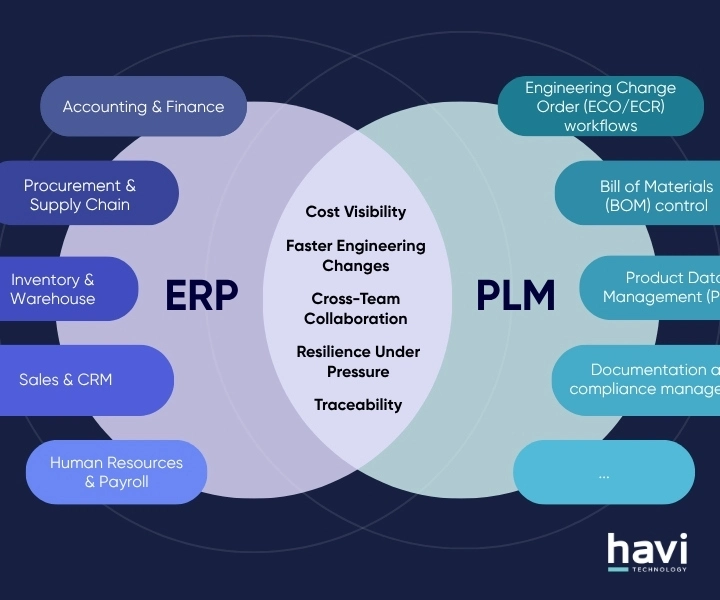TABLE OF CONTENTS
- 1. Website and Customer Experience
- 1.1. Website & eCommerce: Guided Onboarding, New Templates, Google Merchant Sync
- 1.2 Live Chat and Discuss: Expertise Routing, Chat Insights, Status Controls
- 2. Sales, CRM and Subscriptions
- 2.1 Sales: Editable Optional Products, Catalogue Sections, Portal Top-Up
- 2.2. CRM and Marketing: AI Probability, Lead Sources, Kanban Linking
- 2.3. Subscriptions: Prorated Billing, One-Time Sales, Portal Edits
- 3. Inventory, Purchase and Barcode
- 3.1. Inventory and Purchase: Packages within Packages, Forecasted Reports, Suggested Quantity to Replenish
- 3.2. Barcode: Operation Descriptions, Product Source Location, Lot and Serial Number Properties
- 4. Manufacturing, Shop Floor & Planning
- 4.1. MRP: Gantt View, Editable Deadlines, Labour-Based Valuation
- 4.2. Shop Floor & Planning: Barcode Workflows, Shift Scheduling, Routing Edits
- 5. Project, Timesheets and Services
- 5.1. Project and Timesheet: Smart Assign, Mobile Grid View, Priority Alerts
- 5.2. Field Service and Appointments: Calendar View, Technician Tracking, Mass Planning
- 6. HR, Payroll and Expenses
- 6.1. Payroll: Redesigned Engine, Payslip Correction, Unified Master Report
- 6.2. Time Off and Expenses: Odoo Master Cards, Multi-Expense Submission, Complex Duration
- 7. Accounting, Compliance and ESG
- 7.1. Accounting: Peppol Invoicing, Bank Sync, BAS Reports
- 7.2. ESG App: Scope 1–3 Emissions, CSRD Reporting, Auto Category Mapping
- 8. AI, Documents and Sign
- 8.1. AI App: Prompt Commands, Auto Field Completion, Voice and Web Search
- 8.2. Sign and Documents: Bulk Signing, Chatter Integration, Access Controls
- Odoo 19: What’s Coming For Australia?
- 1. Fully compliant Payroll AU with STP Phase 2 and SuperStream
- 2. ABA file payments, Direct Debit for wages/super
- 3. Multi-stream YTD import, backpay, and validations
- 4. 2025–26 tax rules, STSL changes, ATO security
- 5. Peppol invoicing, GST toggle, fringe benefits, BAS automation
- 6. Tyro integration
- 7. Roadmap: SBR BAS lodging, Open Banking, PEL Access, Fiduciary Program
- Odoo 19’s FAQs For Australian Teams
- 1. How should Australian businesses prepare?
- 2. How is Odoo 19 different from Odoo 18 in Australia?
- 3. How can AI in Odoo 19 be tailored for real business outcomes?
- 4. How can I try Odoo 19 or upgrade from my current version?





Key Takeaways:
What is an Integrated ERP System?
An integrated ERP system is a centralised software that connects different business functions - finance, inventory, HR, sales, and more - into one unified system. It allows real-time data sharing between departments, reducing manual work, errors, and inefficiencies.
For example, if a customer places an order:
All this happens automatically, without manual data entry or delays.
Integrated ERP system vs non-integrated ERP system
Businesses using non-integrated systems often struggle with data silos, meaning each department operates independently with separate software. This leads to:
The table below will outline how integrated ERP systems and non-integrated ERP systems are compared.
Feature
Non-integrated system
Integrated ERP system
Data flow
Manual, disconnected; data exists in silos and requires manual transfer between systems.
Automated, real-time; centralised database ensures seamless data sharing across all departments.
Efficiency
Processes are slow and repetitive, often requiring redundant data entry and manual reconciliation.
Streamlined workflows; automation reduces manual tasks and improves productivity.
Decision-making
Delayed due to fragmented and inconsistent data; limited visibility of overall operations.
Data-driven with real-time insights; centralised data enables faster and more informed decision-making.
Scalability
Difficult to expand; scaling requires significant manual adjustments and additional software integrations.
Easily scalable with modular design; supports business growth without major disruptions or additional tools.
Integration
Requires multiple third-party tools with limited compatibility, leading to inefficiencies.
Built-in modules integrate seamlessly; supports third-party integrations for specialised functionalities (e.g., logistics, payments).
Customisation
Limited customisation options; often requires external software or development efforts for tailoring.
From moderate to high customisation depending on the platforms.
Cost efficiency
High operational costs due to inefficiencies, redundant processes, and manual interventions.
Cost savings through automation, reduced redundancies, and streamlined operations over time.
User experience
Fragmented systems create a disjointed user experience; employees must navigate multiple platforms.
A unified platform provides a seamless user experience with consistent interfaces and centralised access to data.
How Integrated ERP Systems Drive Your Business Growth
As your business grows, managing multiple departments, data sources, and workflows can become overwhelming. An ERP system automates and integrates core business functions, helping you streamline operations, automate tasks, and improve collaboration, making it easier to scale without inefficiencies slowing you down.
This following picture shows how integrated ERP systems drive your business growth:
1. Scaling operations without complexity
Expanding your business shouldn’t mean adding more administrative burdens. With an ERP system, you can seamlessly integrate new business units, manage multiple locations, and coordinate workflows across departments. Instead of juggling different software tools, everything operates within one unified system.
2. Automating processes to improve productivity
Repetitive tasks consume valuable time and increase the risk of human error. ERP automation eliminates manual data entry, invoicing delays, and inefficient inventory tracking, allowing your team to focus on higher-value work.
3. Enhancing communication & team collaboration
When departments operate in isolation, miscommunication leads to costly mistakes. Integration of different modules in ERP ensures that finance, sales, HR, and operations share the same data, fostering seamless collaboration.
4. Reducing costs & optimising efficiency
As your company expands, operational costs can quickly escalate. An ERP system helps you track expenses, identify inefficiencies, and optimise resource allocation, preventing unnecessary spending. With better visibility into financial performance, businesses can cut costs without sacrificing quality.
5. Delivering a better customer experience
A growing business needs to maintain fast, reliable, and personalised customer service. ERP integration enhances order management, automates fulfilment, and keeps customer records updated in real-time. This leads to faster deliveries, accurate billing, and proactive customer support.
Top Integrated ERP Systems for Modern Businesses
Selecting the right ERP system is crucial for ensuring seamless integration, operational efficiency, and business growth. According to Forrester’s ERP Wave Report (Q2 2024), businesses must choose an ERP that aligns with their industry’s operational needs and compliance requirements. Functional fit matters - a system designed for manufacturing won’t be ideal for professional services, and vice versa.
Below are the leading ERP solutions, each offering unique strengths based on business size, industry, and integration capabilities.
1. Odoo
Best for: Small to mid-sized businesses (SMBs), growing firms, and companies needing modular customisation.
Odoo is a fully integrated ERP system that offers flexibility for businesses to customise and scale their operations. It comes with 40+ core modules and 51,000+ integrated apps, covering key business functions like sales, finance, HR, inventory, marketing, and website.
This following picture shows the core Odoo modules across business functions:
Key features of Odoo:
Why should you choose Odoo?
Odoo is an excellent choice for businesses looking for a cost-effective, scalable ERP that can be customised to fit specific needs. As an Official Odoo Partner, Havi Technology can help businesses implement and optimise Odoo to streamline workflows, integrate processes, and maximise efficiency.
2. Microsoft Dynamics 365
Best for: Medium to large enterprises and corporations needing deep Microsoft integration.
Microsoft Dynamics 365 is a cloud-based ERP and CRM solution that combines finance, operations, supply chain, and customer management into a single platform. Seamlessly integrating with Microsoft tools like Office 365, Power BI, and Azure, it’s a go-to choice for enterprises looking for a powerful, AI-driven business solution.
This following picture shows Microsoft Dynamics 365 business solutions overview:
Key features of Microsoft Dynamics 365:
Why should you choose Dynamics 365?
For businesses that already rely on Microsoft products, Dynamics 365 provides a seamless ERP experience. As an official Microsoft Partner in Australia, Havi Technology helps companies implement Dynamics 365 to enhance efficiency, automate operations, and drive digital transformation.
3. SAP
Best for: Large corporations, global enterprises, and industries requiring complex ERP functionalities.
SAP is one of the most established ERP providers, used by large enterprises worldwide. It offers solutions tailored to industries such as manufacturing, logistics, retail, and finance. This following picture shows SAP ERP:
Source: SAP
Key features of SAP:
Why should you choose SAP?
SAP is ideal for large corporations requiring robust, industry-specific ERP solutions. While SAP is a market leader, its high implementation costs and complexity make it more suitable for large enterprises rather than small businesses.
4. Oracle NetSuite
Best for: Mid-to-large businesses looking for cloud-based, scalable ERP solutions.
Oracle NetSuite is a cloud-first ERP solution that offers a fully integrated suite of business applications, including financial management, CRM, eCommerce, and inventory control. It’s designed to help businesses scale without heavy IT infrastructure investments. This following picture shows Oracle NetSuite:
Source: NetSuite
Key features of Oracle NetSuite:
Why should you choose Oracle NetSuite?
NetSuite is a great option for businesses that need a scalable, cloud-based ERP solution with strong financial and operational capabilities. However, customisation is more complex than Odoo, and costs can be higher for growing businesses.
5 Core Components of an Integrated ERP System
A well-structured ERP system consists of several key components that work together to streamline operations, improve efficiency, and enhance decision-making. Each module plays a critical role in optimising business processes, ensuring seamless data flow across departments, and fostering scalability and growth. Below are the five core components that form the backbone of an integrated ERP system. This following picture shows 5 core components of an integrated ERP system:
1. Financial management
Every business needs accurate financial tracking to monitor cash flow, profits, and expenses. The financial management module in an ERP system automates key accounting tasks, ensuring real-time visibility into the company’s financial health.
Key features:
2. Human resources (HR) & Payroll
Managing employees manually can be time-consuming and error-prone. The HR module in an ERP system helps businesses streamline payroll, performance tracking, and compliance with labour laws.
Key features:
3. Supply chain & inventory management
For companies dealing with physical products, managing stock levels and logistics efficiently is critical. The supply chain and inventory module in an ERP system keeps track of materials, warehouse operations, and order fulfilment.
Key features:
4. Sales & customer relationship management (CRM)
An ERP system with a built-in CRM module helps businesses manage leads, sales pipelines, and customer interactions more efficiently. By automating interactions and centralising data, businesses can personalise customer experiences, improve conversion rates, and boost retention.
Key features:
5. Reporting & business analytics
Data-driven decision-making is crucial for business success. The reporting and analytics module of an ERP system provides real-time insights into key business metrics, helping companies make informed choices and optimise performance.
Key features:
External Systems That Integrate with ERP Software
An integrated ERP system becomes even more powerful when connected with external software, ensuring seamless data flow across different business functions. Below is a breakdown of key external systems that integrate with ERP and how they enhance business operations.
Category
Purpose
Popular integrations
Benefits for business
CRM systems
Manage customer relationships, sales, and interactions
Salesforce, HubSpot, Zoho CRM
Enables advanced CRM features for managing complex sales pipelines, automating workflows, and improving customer segmentation.
E-commerce platforms
Sync online sales with inventory and finance
Shopify, Magento, WooCommerce
Automates order processing, updates inventory in real-time, and streamlines financial transactions.
Payment gateways
Facilitate secure online transactions
Stripe, PayPal
Ensures automated payment processing, reduces manual reconciliation, and enhances cash flow management.
Project management tools
Track projects, tasks, and team collaboration
Asana, Trello, Microsoft Project
Improves project tracking, aligns financial planning with operational execution, and enhances productivity.
Business Intelligence (BI) tools
Provide real-time data analysis and reporting
Power BI, Tableau
Enables data-driven decision-making, visualises key business metrics, and improves forecasting
Accounting software
Handle bookkeeping, invoicing, and financial tracking
QuickBooks, Xero, MYOB
Automates financial reporting that ensures tax compliance and eliminates redundant data entry.
Supply chain management (SCM) systems
Optimise procurement and logistics
SAP Ariba, Oracle SCM
Enhances supplier coordination, reduces procurement delays, and improves supply chain efficiency.
Is an Integrated ERP System Right for You?
Your business could benefit from an ERP if you:
At Havi Technology, we specialise in Odoo and Microsoft Dynamics 365, providing businesses with tailored ERP solutions that enhance efficiency and scalability. Whether you’re looking to streamline financial management, optimise supply chain processes, or improve customer interactions, we help you choose the right technology, implement a tailored ERP system that aligns with your business needs, provide personalised training, and ongoing support.
What is an integrated ERP system?
An integrated ERP (Enterprise Resource Planning) system is software that connects and automates key business functions - such as finance, inventory, HR, sales, and customer management - into a single platform. Unlike standalone tools, an integrated ERP ensures real-time data sharing, reducing errors, and improving efficiency.
What is an example of ERP integration?
A common example of ERP integration is connecting an ERP system with an eCommerce platform like Shopify. When a customer places an order, the ERP system automatically updates inventory, generates an invoice, and triggers fulfilment workflows - without manual input.
Is an integrated management system the same as ERP?
No, an Integrated Management System (IMS) and an ERP system are different.
How does ERP integration work with third-party software?
ERP integration works through APIs, middleware, or built-in connectors, allowing an ERP system to exchange data with third-party applications. For example:
References: